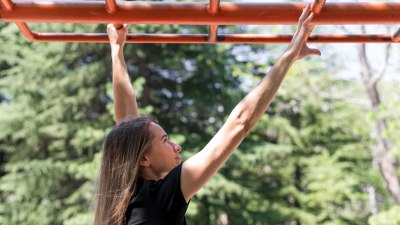Why It’s Always Windier When You Carry a Pizza Box
Explore the curious phenomenon of why it always seems windier when you carry a pizza box and the science behind it.

Have you ever noticed that when you're carrying a large, flat pizza box outside, it suddenly feels windier than usual? This common experience is more than just your imagination or bad luck; it's a fascinating interplay of physics, weather, and human perception. Understanding why it feels windier when you carry a pizza box involves exploring concepts related to how air moves around surfaces, the effect of the pizza box on your body, and the psychological factors that make the wind feel stronger.
The Pizza Box as a Wind Catcher
One of the most straightforward reasons why it seems windier with a pizza box is the box's physical characteristics. A typical pizza box is large, flat, and generally held horizontally to keep the pizza fresh and intact. This shape makes it an excellent “sail” that the wind can push against, so even a light breeze can feel much stronger when you’re holding the box out in front of you.
When you hold the pizza box, you effectively increase your body's surface area that faces the wind. Normally, when you walk outside, your body blocks some wind naturally because of your size and shape. However, adding the large, flat pizza box increases the surface that is directly exposed to the wind, capturing more airflow. This amplified exposure results in a greater force being applied against the box, which can push and jostle it, making the wind’s effect more noticeable.
Think of the pizza box as a small sail on a boat. Sailboats rely on their sails to catch the wind and propel them forward. Similarly, when you carry a pizza box, it acts as a sail catching the wind, making the wind feel stronger than it actually is. Because the pizza box is being carried by your hands and arms, every gust makes it challenging to maintain control over the box, emphasizing the perception of stronger wind.
Wind Pressure and Airflow Dynamics
From a physics standpoint, the sensation of increased windiness is linked to the concept of wind pressure. Wind pressure is determined by the density of air and the square of its velocity. Even a small increase in wind speed can cause a disproportionately larger increase in pressure exerted on the pizza box’s surface.
When air flows around a surface such as a pizza box, several forces come into play: drag, lift, and pressure differentials. The pizza box’s flat, large surface area maximizes the drag force, which is the resistance force opposing the wind. This drag pushes against the box, making it feel heavier and more difficult to carry when the wind picks up. In contrast, streamlined objects allow air to flow more smoothly around them, minimizing resistance.
Moreover, turbulence can develop around the edges of the pizza box. Turbulent airflow can create sudden gusty effects and uneven pressure distribution, further complicating the handling of the box. This turbulence can cause the box to flap slightly or vibrate, further reinforcing the feeling that the wind is stronger than under normal circumstances.
Psychological Perception of Wind
Beyond the physical and aerodynamic reasons, the perceived strength of the wind when carrying a pizza box is partly influenced by psychological factors. When you’re carrying something important and fragile—like a hot pizza—you are more focused on maintaining a steady hold and protecting the contents. This heightened attention can make you more sensitive to external factors such as wind.
Stress and anxiety play a role here. The fear of dropping or damaging the pizza increases your vigilance. Every gust of wind feels significant because it threatens the safety of your expensive and eagerly anticipated food. This increased sensitivity heightens the overall perception of windiness, making even a mild breeze feel like a strong windstorm.
Additionally, the pizza box itself serves as a visual cue to your brain that you’re holding something vulnerable. This visual signal primes your mind to prepare for difficulties, such as sudden gusts of wind. Your brain may amplify sensations of the environment to ensure you react quickly and appropriately in protecting the pizza. This feedback loop intensifies your subjective experience of the wind.
The Role of Posture and Movement
Carrying a pizza box influences your posture and movement, which can unintentionally expose you to more wind or make the wind feel stronger. To keep the pizza stable, people often walk carefully and hold the box steady, typically extending their arms slightly in front of their bodies. This action places the box directly in the line of the wind, exacerbating its effects.
Moreover, walking forward increases the relative wind speed you experience. Relative wind speed is the speed of the air relative to your movement. Even on a calm day, walking briskly creates a sensation of wind rushing past your body and pizza box. When actual wind is added to your movement, the combined wind speed hitting your pizza box increases, further intensifying the sensation of windiness.
The way you walk and the position in which you hold the pizza box may also cause changes in body balance and muscle tension. Trying to counteract the force of the wind on the box, your muscles may become stiff or tense, which can make the experience of carrying the pizza feel more physically demanding and noticeable.
Environmental Variables and Location
The environment you are in can also amplify the phenomenon. Narrow streets or urban canyons, where tall buildings flank sidewalks, are notorious for creating wind tunnel effects. Wind flowing through these tight gaps speeds up and can hit you and your pizza box with unexpected force. Similarly, open fields or parking lots expose you to unimpeded gusts of wind, which can feel much stronger when there is nothing to break the airflow.
Topography plays a role as well. Hills, valleys, and structures influence local wind speeds and patterns significantly. Carrying a pizza box uphill or exposed on a ridge can exacerbate the wind’s impact. On some days, sudden changes in weather such as gust fronts or squalls can produce bursts of wind that catch you off guard, especially when holding a large pizza box.
Weather conditions such as temperature gradients and atmospheric pressure affect the wind. Thermal differences between shaded and sunny areas can create localized breeze variations, making the wind feel unpredictable. This inconsistency combined with holding a pizza box can increase the sense of windiness.
The Physics of Pizza Box Stability
Pizza boxes generally have limited structural rigidity. Although designed to be sturdy enough to hold a pizza without collapsing, their relatively thin cardboard construction means they are vulnerable to bending and flapping in the wind. When wind pressure increases, the edges of the pizza box can flex, creating vibrations or sudden movements that you feel in your hands.
Such instability adds to the difficulty of holding the box steady. The fact that the box can pivot or flutter in response to gusts means you must use additional muscle control to maintain balance and keep the pizza safe. These necessary adjustments increase your awareness of the wind’s power and make everyday wind feel exaggerated.
Additionally, many pizza boxes have ventilation holes or gaps to prevent condensation inside. These openings influence how air flows through and around the box. While they can reduce wind pressure slightly by allowing some air to pass, they also disrupt airflow patterns, potentially increasing turbulence near your hands and arms.
Comparisons with Other Objects
Carrying objects other than pizza boxes will not always create the same sensation of increased windiness, primarily because of their shape and size. For instance, carrying a small bag or backpack close to your body presents a minimal additional surface area to the wind. In contrast, a pizza box is often held away from the body and oriented to maximize its horizontal surface exposed to the wind.
Objects with rounded shapes, like a flask or a ball, promote smooth airflow with reduced drag forces, making the wind less noticeable while carrying them. Flat, wide, and lightweight objects like pizza boxes are unique in how they interact with wind, making their effects more pronounced.
Interestingly, this effect is not limited to pizza boxes. Any large, flat, lightweight object you carry—like a large book, clipboard, or tray—will produce similar effects, increasing the apparent wind strength. The pizza box stands out simply because you often carry it outdoors and because the stakes of dropping it are high.
Practical Tips for Managing Wind While Carrying Pizza
Given the challenges posed by wind when carrying a pizza box, there are practical strategies you can use to make the experience more manageable and ensure your pizza arrives safely.
1. Keep the Box Close to Your Body: Holding the pizza box closer to your torso reduces its effective surface area exposed to the wind. This positioning diminishes the sail effect and helps you maintain better control.
2. Shield with Your Body: Use your body as a buffer by turning your back or side against the wind whenever possible. This technique can block some of the airflow and reduce pressure on the box.
3. Use Two Hands: Whenever possible, use both hands to stabilize the box. It provides more control and allows you to respond quickly to gusts that try to push or tip the box.
4. Walk Steadily and Slowly: Slowing down reduces relative wind speed from your movement, making the box easier to handle. Avoid sudden jerky motions that can destabilize the pizza box.
5. Choose Sheltered Routes: Take paths that are sheltered from the wind, such as walking along building sides, hedges, or under awnings, to minimize exposure.
6. Consider Packaging Alternatives: Some pizza vendors offer sturdier boxes or carry bags with wind-resistant designs. Investing in these options can minimize the challenge.
Why This Simple Experience Resonates with Many
The phenomenon of increased windiness when carrying a pizza box strikes a chord with many because it combines relatable sensory experiences with a small but significant challenge. It is a universal observation shared by pizza lovers all over the world, bonding people through a common and humorous struggle.
Moreover, the pizza delivery experience itself is symbolic of comfort, anticipation, and the joy of shared meals. When the wind intervenes, threatening that perfect moment, it adds a dash of tension and humor to the story, making it memorable and widely discussed.
From a scientific perspective, this simple observation is an excellent lesson in basic fluid dynamics and human perception. It highlights how a casual human experience can illustrate real-world physics principles at work, making science accessible and relevant.
Final Observations on the Interaction Between Wind and Pizza Boxes
In conclusion, the reason it always seems windier when you carry a pizza box lies in the combination of aerodynamic forces, increased surface area, body movement, environmental conditions, and psychological perception. The pizza box acts like a sail, catching more wind and increasing the drag force you feel. At the same time, your attention to the pizza’s safety heightens your sensitivity to external influences, amplifying the sense of windiness.
Understanding this phenomenon can not only enhance appreciation for everyday encounters but also inspire practical steps to mitigate difficulties. So next time you feel the wind picking up while carrying your pizza, remember it’s a natural occurrence grounded in physics and awareness—part of the delicious journey from pizzeria to plate.
Whether you’re a physics enthusiast, a pizza lover, or just someone curious about why such mundane moments feel so vivid, the experience of carrying a pizza box in the wind provides a surprising window into the unseen forces we interact with daily. Appreciating these moments enriches our outlook and connects us to the world’s subtle complexities.











